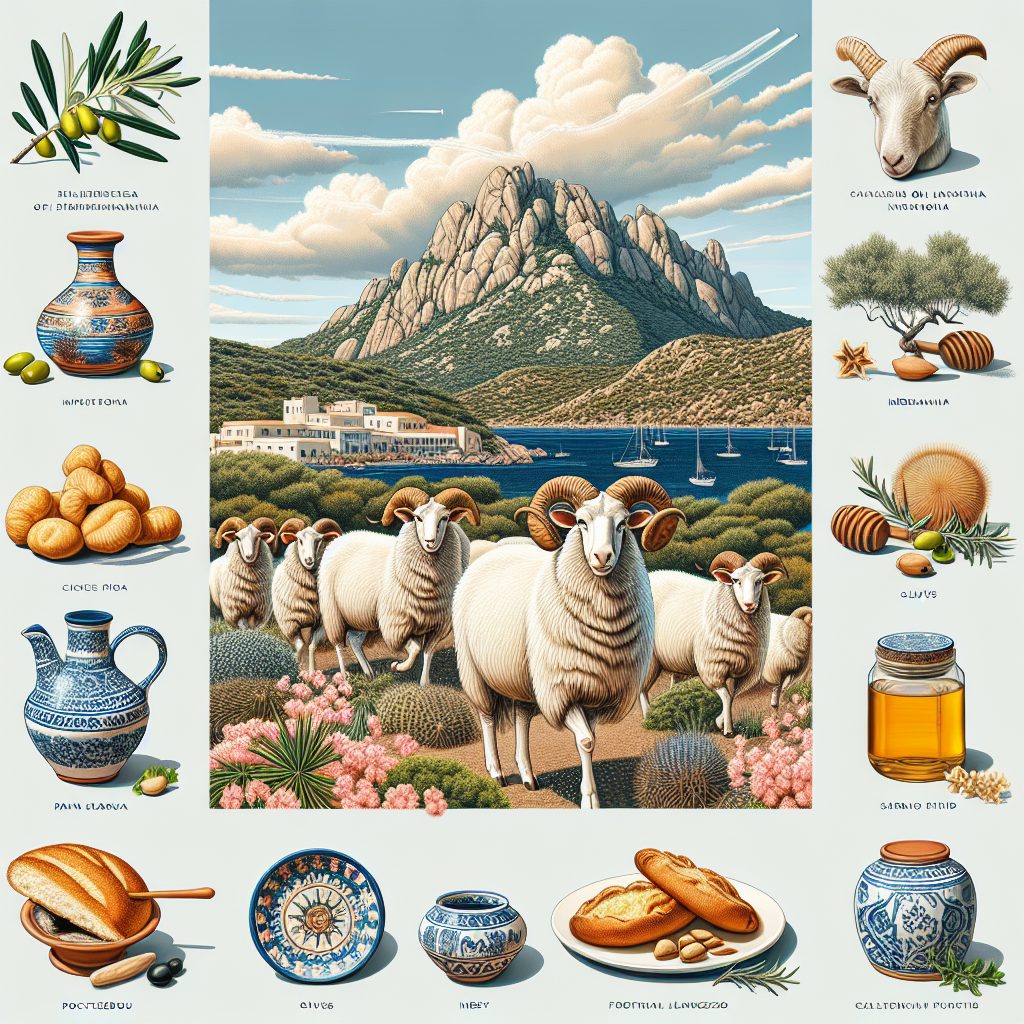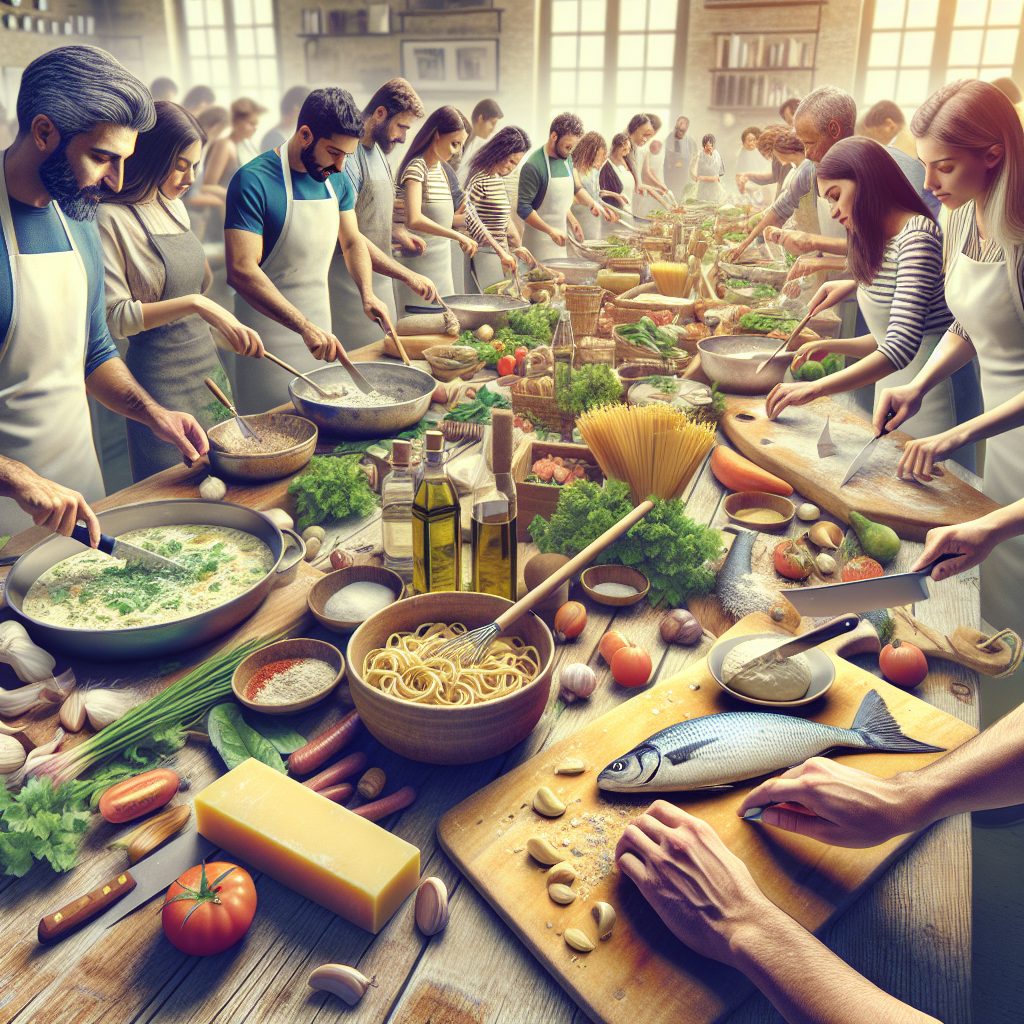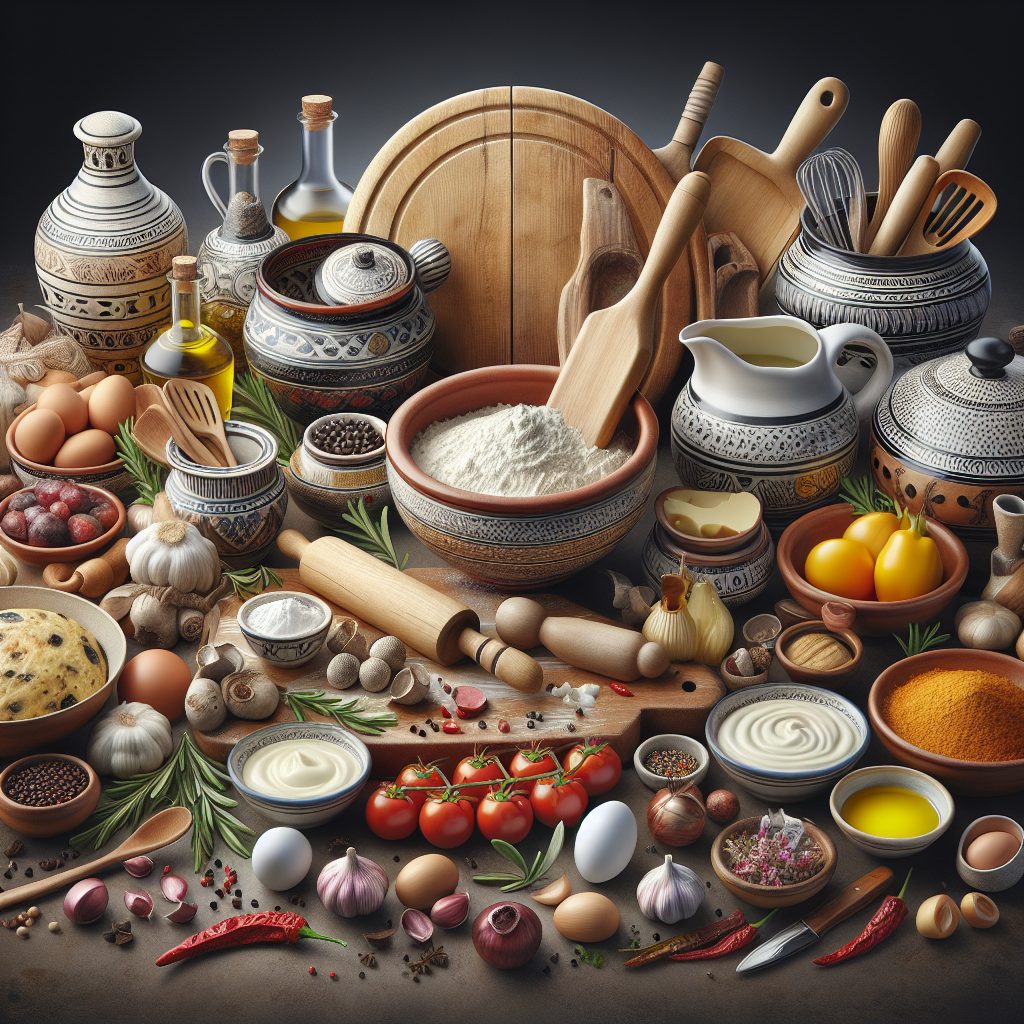Sardinian gastronomy is a vibrant and diverse culinary tradition that has been shaped by a multitude of influences over the centuries. From its roots in ancient nuragic civilization to the various conquerors and settlers who have left their mark on the island, the food of Sardinia is a reflection of its rich history and cultural heritage. One unique aspect of Sardinian gastronomy is its close relationship with the land and sea, with a strong emphasis on fresh and locally sourced ingredients. This commitment to quality and authenticity has helped Sardinian cuisine gain recognition not only within Italy but also on the international stage.
The influences on Sardinian gastronomy can be traced back to ancient times, with the nuragic people who inhabited the island over three thousand years ago. These early settlers had a profound impact on the island’s culinary traditions, introducing agricultural practices and cultivating crops such as grains, legumes, and fruits. In addition, they were skilled herders, and their expertise in raising livestock like sheep and goats contributed to the development of Sardinia’s renowned sheep’s milk cheese industry.
Moving forward in time, Sardinia’s strategic location in the Mediterranean made it a sought-after prize for various conquerors and settlers, including the Phoenicians, Carthaginians, Romans, Byzantines, and various Arab and Spanish rulers. Each wave of invaders left their mark on the island’s gastronomy, introducing new ingredients and cooking techniques. For example, the Spanish brought with them the use of saffron, almonds, and exotic spices, which are now integral elements of many traditional Sardinian dishes.
In the upcoming sections, we will delve deeper into the key takeaways from Sardinian gastronomy. We will explore the island’s unique bread-making traditions, the importance of seafood in Sardinian cuisine, and the role of traditional festivals in preserving and celebrating local culinary traditions. By understanding these influences and features, readers will gain a deeper appreciation for the rich and diverse flavors that make up the gastronomic tapestry of Sardinia. So, let’s embark on this culinary journey and discover the fascinating world of Sardinian gastronomy.
Key Takeaways
1. Sardinian gastronomy is deeply influenced by its geographical location, history, and cultural blend, resulting in a unique and diverse cuisine.
2. The island’s rich culinary tradition is characterized by the abundant use of locally sourced ingredients such as fresh seafood, aromatic herbs, and high-quality meats.
3. Sardinians’ close bond with nature and appreciation for sustainable farming practices have paved the way for a strong emphasis on organic and traditional food production.
4. The influence of various Mediterranean civilizations, including the Phoenicians, Romans, Arabs, and Spanish, is evident in the flavors, techniques, and ingredients found in Sardinian dishes.
5. Sardinia’s traditional festivals and celebrations play a significant role in shaping its gastronomy, with unique dishes and culinary customs being passed down through generations, preserving cultural heritage.
What are the Influences on Sardinian Gastronomy?
Historical Influences
The gastronomy of Sardinia has been shaped by a variety of historical influences throughout the centuries. The island’s strategic location in the Mediterranean has attracted different civilizations, each leaving their mark on the local cuisine. Phoenicians, Carthaginians, Romans, Byzantines, Arabs, and Spanish have all influenced the traditional Sardinian dishes we know today.
Geographical Influences
The unique geography of Sardinia has also played a significant role in shaping its gastronomy. Surrounded by the Mediterranean Sea, the island has a strong fishing tradition, resulting in an abundance of seafood-based dishes. The hilly and mountainous terrain, on the other hand, has favorably influenced the production of cheeses and cured meats.
Traditional Sardinian Ingredients
The culinary traditions of Sardinia rely heavily on locally sourced ingredients. The island’s cuisine showcases the use of ingredients such as durum wheat, lamb, pecorino cheese, olive oil, wild herbs, artichokes, asparagus, and honey. These elements, combined with the historical and geographical influences, contribute to the unique flavors and aromas of Sardinian gastronomy.
Influences from Other Italian Regions
While Sardinia has a strong culinary identity of its own, it has also been influenced by other regions of Italy. The island’s close proximity to Corsica, Sicily, and mainland Italy has resulted in a cultural exchange of culinary practices. Influences from regions like Tuscany, Liguria, and Campania can be found in certain Sardinian dishes, creating a diverse and dynamic gastronomic experience.
Modern Influences and Globalization
In recent years, globalization has inevitably influenced Sardinian gastronomy. Modern cooking techniques, international food trends, and the impact of tourism have all contributed to the evolution of traditional Sardinian dishes. While there is a continued effort to preserve and promote authentic local cuisine, the island has also embraced innovation and fusion in its gastronomic scene.
Guides for Exploring Sardinian Gastronomy
- Discover traditional Sardinian recipes and try your hand at cooking them at home.
- Visit local markets in Sardinia to experience the vibrant colors and scents of fresh regional produce.
- Explore agritourism experiences where you can learn about traditional food production methods and taste authentic Sardinian products.
- Participate in a food and wine tour or cooking class to delve deeper into the secrets of Sardinian gastronomy.
- Seek out local restaurants and trattorias that specialize in traditional Sardinian cuisine to savor unique flavors.
- Engage with locals and ask for their recommendations and insights regarding the best places to enjoy Sardinian gastronomy.
Frequently Asked Questions
1. What are the main influences on Sardinian gastronomy?
The main influences on Sardinian gastronomy include Italian, Spanish, and Arabic cuisines. These cultures have left a significant mark on the island’s culinary traditions, resulting in a unique blend of flavors and cooking techniques.
2. How does Italian cuisine influence Sardinian gastronomy?
Italian cuisine has a strong influence on Sardinian gastronomy as the island is a part of Italy. The use of pasta, tomatoes, olive oil, and various herbs are prevalent in Sardinian dishes. Additionally, classic Italian recipes like lasagna, risotto, and tiramisu have made their way into the island’s culinary repertoire.
3. What are the Spanish influences on Sardinian gastronomy?
Spanish influences on Sardinian gastronomy are mainly attributed to historical factors, as Spain ruled the island for several centuries. Some of the Spanish-influenced dishes include fregola, a couscous-like pasta, and porcheddu, a roasted suckling pig. The use of saffron, almonds, and honey in Sardinian cuisine can also be traced back to the Spanish influence.
4. How has Arabic cuisine influenced Sardinian gastronomy?
The Arab influence on Sardinian gastronomy is notable in the island’s use of ingredients such as cinnamon, cloves, and other spices. The influence can be seen in dishes like panadas, savory stuffed pastries, and seadas, a traditional Sardinian dessert filled with cheese and drizzled with honey.
5. Are there any other cultural influences on Sardinian gastronomy?
Yes, apart from the main influences of Italian, Spanish, and Arabic cuisines, Sardinian gastronomy also showcases influences from the Phoenicians, Greeks, and Romans. These ancient civilizations have left their mark on the island’s food culture, bringing ingredients like seafood, olives, and grapes.
6. How has Sardinian gastronomy evolved over time?
Over time, Sardinian gastronomy has evolved by incorporating new ingredients and cooking techniques from various cultural influences. It has adapted to changing tastes and preferences while still preserving its traditional roots. The gastronomy of the island continues to evolve as globalization and tourism introduce new flavors and influences.
7. What are some traditional Sardinian dishes that showcase these influences?
Traditional Sardinian dishes that showcase these influences include malloreddus, a saffron-flavored pasta served with tomato sauce and sausage; bottarga, cured fish roe served as a topping or ingredient in various dishes; and sebadas, a fried pastry filled with cheese and served with honey.
8. Can I experience Sardinian gastronomy outside of the island?
While the authentic Sardinian gastronomic experience is best enjoyed on the island itself, many Italian restaurants around the world offer Sardinian-inspired dishes. These may incorporate some of the island’s traditional ingredients and cooking techniques, allowing you to get a taste of Sardinian gastronomy even if you are not in Sardinia.
9. Is Sardinian gastronomy suitable for vegetarians and vegans?
Sardinian gastronomy offers a variety of vegetarian and vegan options. Traditional dishes like pane frattau, a layered bread dish with a tomato and herb sauce, and fregula with vegetables are popular choices for those following a plant-based diet. Local ingredients like artichokes, zucchini, and fava beans are often utilized, making Sardinian gastronomy suitable for vegetarians and vegans.
10. Can I learn more about Sardinian gastronomy through culinary tours or workshops?
Absolutely! There are several culinary tours and workshops available on the island for those interested in learning more about Sardinian gastronomy. These experiences offer a chance to discover traditional recipes, visit local markets, and even participate in hands-on cooking classes. It’s an excellent way to immerse yourself in the rich culinary heritage of Sardinia.
Final Thoughts on Influences on Sardinian Gastronomy
Sardinian gastronomy is a captivating fusion of culinary influences from various cultures that have shaped the island’s food traditions. The combination of Italian, Spanish, Arabic, and other cultural elements has resulted in a gastronomic landscape that is rich in diversity and flavors.
Exploring Sardinian gastronomy offers a delightful journey through history and culture. From the vibrant colors and scents of the local markets to indulging in traditional dishes, Sardinia is a paradise for food enthusiasts and travelers alike. The island’s gastronomy serves as a tangible link to its past, representing the unique blend of influences that have made it a culinary haven.






